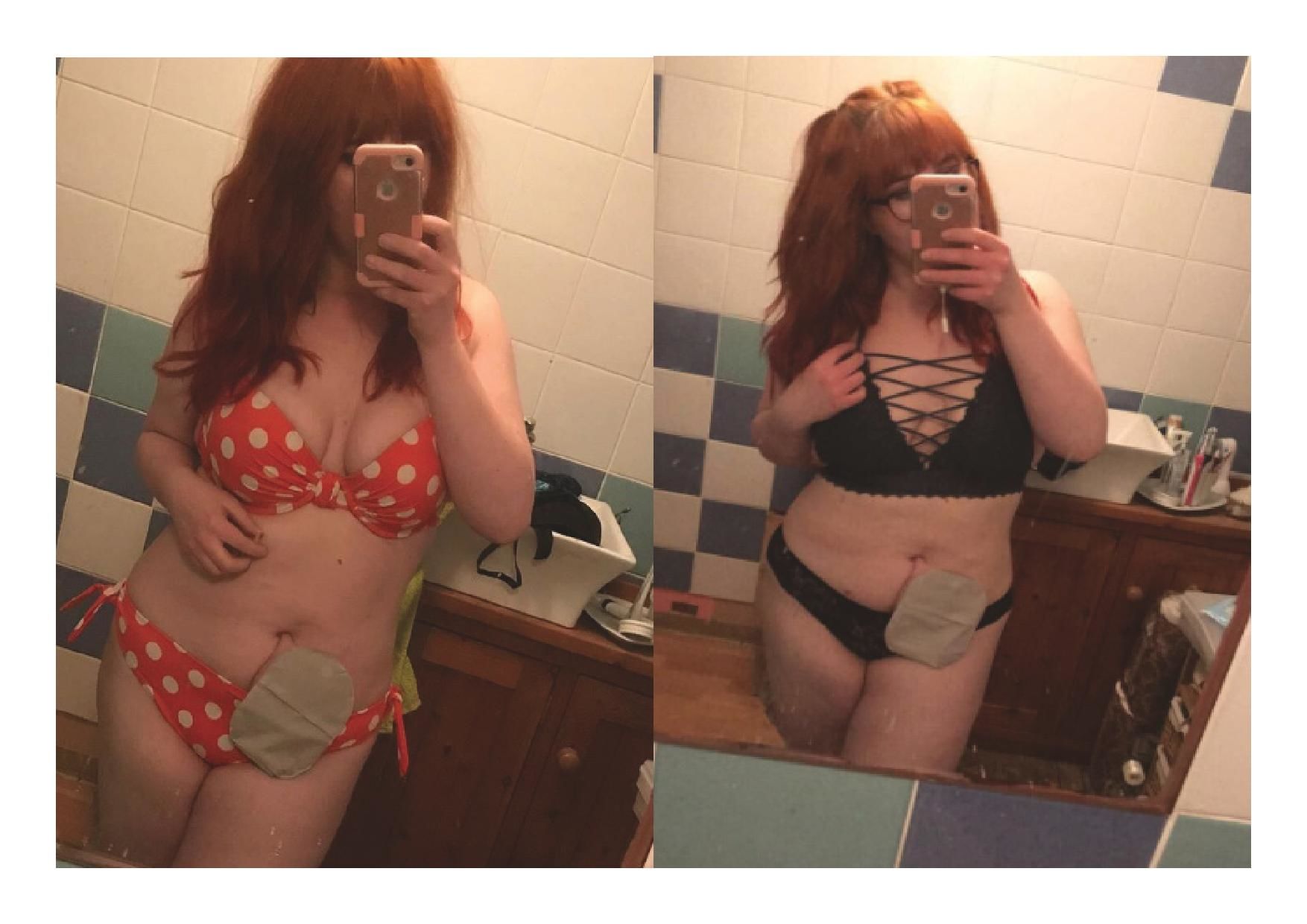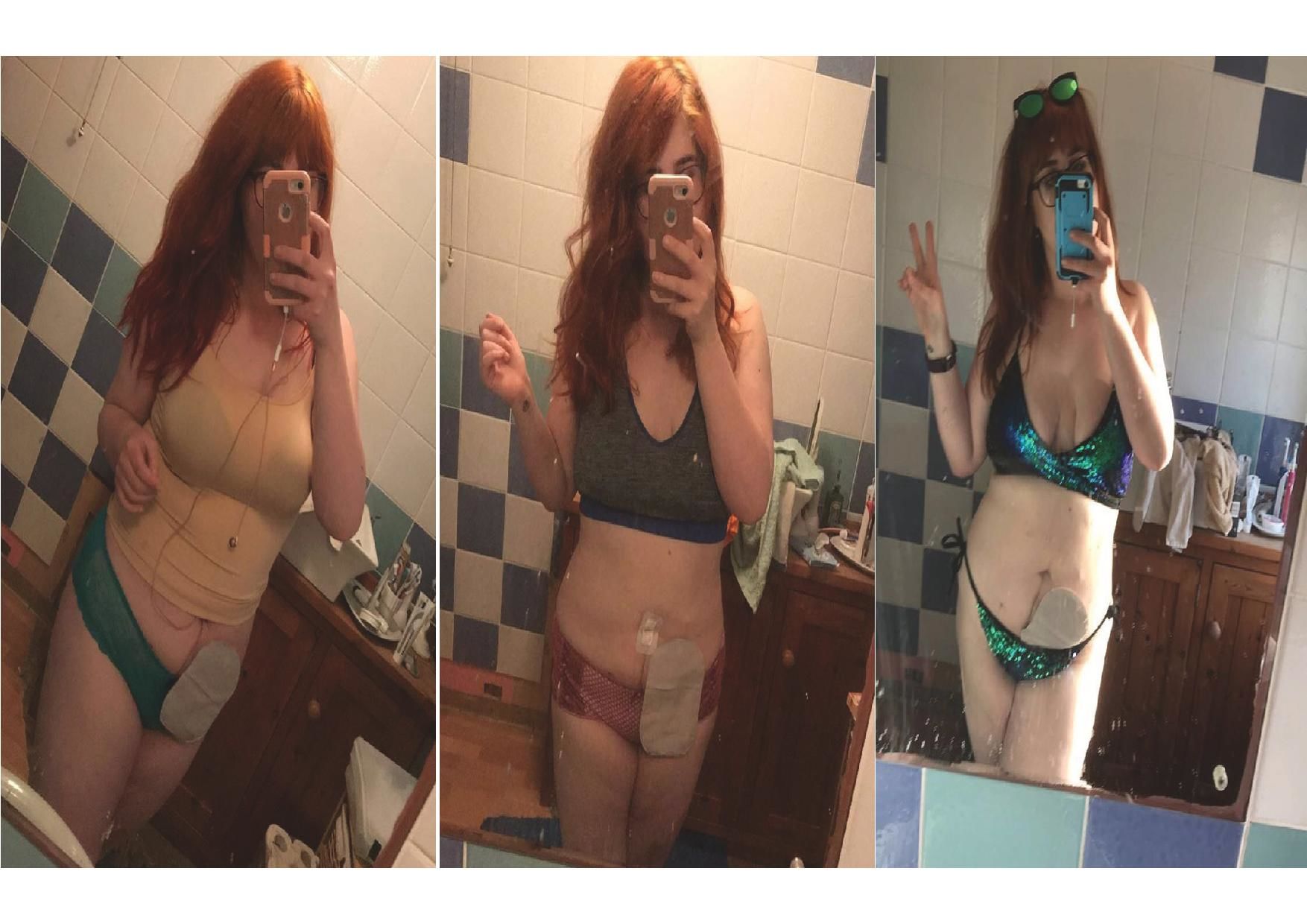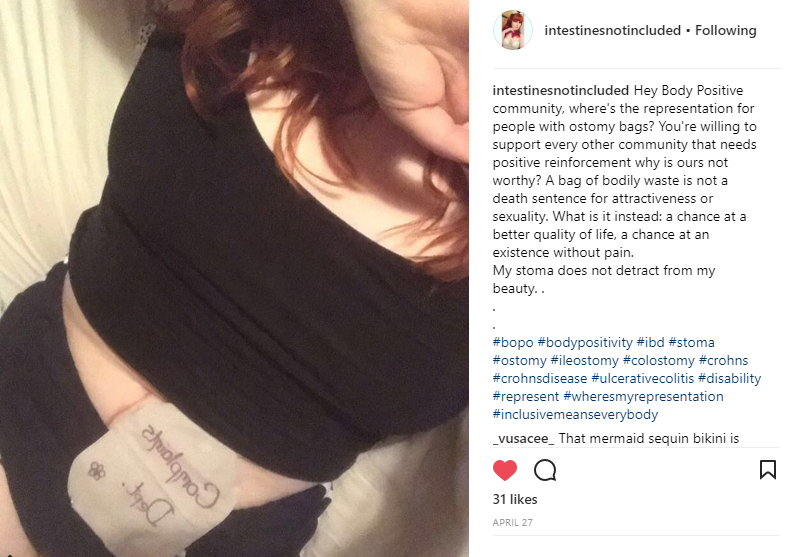Intestines not included: bringing sexy back to ostomy bags
People with ostomy bags are often ignored, overlooked and under represented by body positivity influencers. So Emily Jones is fighting against critics and bringing body image positivity to people with ostomy bags

Almost every girl has had body image issues. Sometimes, immersing yourself in retail therapy can be just what a girl needs to make herself feel better. The excitement you feel when trying on some potential new outfits to highlight your curves or long legs is enough to get some girls out of this rough patch. However, for most, this everyday treat doesn't come ridden with even more anxiety that the bag you wear containing your own poo, which is attached to your body, has decided to leak, spilling the contents of yesterday’s dinner, whilst you try on clothes you haven’t purchased yet.
This is the reality for Emily Jones, 22, who suffers from Crohn’s Disease, and as a result, must wear an ostomy bag at all times.
Crohn’s Disease is a lifelong condition that causes inflammation of the digestive system, which injures the bowels. Because of the damage that Crohn’s Disease has caused Emily’s digestive system, she must wear an ostomy bag, a prosthetic medical device that collects waste from a surgically diverted biological system.

When she was 16 years old, Emily’s organs began to shut down and it looked as though she wasn't going to make it. Spoiler, she totally did. But she needed to have her large intestine removed or it would end up killing her, so the doctors decided to do j-pouch surgery, removing the large intestine and parts of the small, building a fake bowel from what's left. Because Emily was so ill, the surgery was done in three steps. She had an ostomy bag for about a year, the j-pouch for seven years but was still extremely ill. Two years ago the surgeons told her that the best option would be to have a permanent ileostomy and by that point Emily was “practically begging for it,” she says.
Ileostomy procedures are relatively common in the UK with more than 9,000 carried out each year in England.
So, instead of strutting around with bags filled with gorgeous new clothes, Emily struts with her bag full of shit, protruding through her jeans like a bulge.
The reality of wearing a shit-bag
After a whole week of lying in a hospital bed after her permanent ileostomy surgery, Emily was determined to get back on her feet, and decided to go shopping: “I went into the changing room and when I started taking my own clothes off I realised the bag had leaked. I ran to the closest public bathroom, got out my spare stoma kit and got to work cleaning and changing it.”
This tedious and slightly grim routine of cleaning and changing her bag is something Emily has faced once or twice everyday for over 10 years: “It's one of those things where, for the first few times of doing it you take a lot longer, but then once you get the hang of it you can fly through it,” Emily explained.
When Emily was diagnosed with Crohn’s Disease she didn’t have the faintest idea what it was, but after her diagnosis, started becoming more aware of it and recognised an increasing presence of it online. That’s when Emily discovered body positivity social media posts (bo-po posts): “When I was diagnosed I had no clue what it was. I'd never even heard of it. Then once I was diagnosed I heard more and more about it. I don't know whether it was because I was more sensitive to the issue.”
Where are the shit-bags?
Over the past few years the bo-po movement has become huge. It’s difficult to go on any social media without seeing at least one post tagging it. Bo-po posts began with a focus mainly aimed at weight, but grew to include other communities. There have been bo-po posts of people with missing limbs, mobility aids and disfigurements. However, there has been an apparent lack of bo-po influencers for people with ostomy bags.
157 in 100,000 people have Crohn’s Disease, meaning there are over 115,00 people in the UK alone that suffer with it. The disease is more common amongst young women and can even take lives - Read Jessica’s story

With this sizeable number, it’s odd that there is an obvious lack of bo-po posts aimed at these self-conscious women who can more than relate.
Emily thinks this lack of representation for people with this disease is ludicrous: “I really do think the issue is that people don't think it's marketable or it’s something you should be embarrassed about. There's this feeling that it's not acceptable in those communities because in its basic form it is a bag of bodily waste. People overlook the fact that not only did it save someone's life, it gave them a better quality of life too.”
Since having her permanent ileostomy, Emily has been able to do things she never would have imagined doing. These include walking the Pembrokeshire coastal path, taking up regular exercise and going out drinking with her friends whilst staying overnight in cities such as Cardiff and London.
When Emily told her work colleagues that she was undergoing the permanent ileostomy surgery after 10 years of failed medication trials, she was met with shit-bag comments (pun totally intended) with no support: “There's this idea that ostomy bags are only for the old and that it detracts from your physical appeal. It was disgusting how people would talk about it and that was even before I had the operation. The operation not only gave me the chance at enjoying life but after I felt the most self confident I have ever felt in my life,” Emily explained.
“Someone even told me not to get it because no one would find me sexually attractive if I got the bag, and to just put up with the pain if I ever wanted a sex or dating life.”


Body image
Emily has had body image issues since she was just five years old. After returning from a birthday trip to Disneyland, her mum noticed that her chin and neck area “had just ballooned.” Although she was not diagnosed with it until she was 21, Emily had in fact been suffering with hypothyroidism the whole time. The thyroid produces thyroxine which is what controls your metabolism, and as Emily’s thyroid didn’t work at all, she began gaining weight: “I started gaining weight quite drastically and was made to see a dietician regularly because they were convinced it was the way I was treating my body. I think that was really where problems started.”
Emily was bullied for her weight for the entirety of her education and was attending dieting groups from the age of 10 and being told it was her fault she was the size she was. When Emily was finally diagnosed she fell to the floor in tears. However, she wasn’t crying because she was sad, but because “all of a sudden everything made sense.”
However, when Emily first had to have the ostomy bag, her body image issues grew worse: “I had the bag at the same time that every teenager is kinda finding their identity. I think that stage in my life made it a lot harder to cope with. At that age you worry way too much about other people's thoughts on you rather than yourself and that definitely had an impact.”
Emily’s message
Because of the lack of real-life discussion around the disease, Emily started her own blog Intestines Not Included, where she brings to life the everyday struggles she has faced with Crohn’s Disease, something she felt was missing from the information you read online. Emily also found comfort in posting some of her own bo-po images on social media, displaying her ostomy bag unafraid of showing off her battle scars, as well as relating to the few other ostomy bag related bo-po posts.
“It makes me really happy that people are showing off their bodies and embracing it. If I'm having a down day and see one of the people I follow post a cute bo-po photo it does make me feel a little better.”

Emily has even had people get in touch with her in response to her own bo-po posts, leaving positive messages.
“Some have said that it made them feel a bit more confident, which was lovely to hear,” Emily explained. “I had one person ask about it because their friend had it and they wanted to understand it better and then I've a fair few people curious as to why I have a bag or even what it is so it's also helping educate people too.”
What sparked Emily to go public about the lack of representation was people's comments about ostomy bags, as well as the other people she had overheard in hospitals and clinics worrying that others wouldn't find them attractive after the operation. This lack of representation makes people feel like freaks and outsiders and that’s what Emily thinks needs to change.
“If we're going to have an inclusive community then it needs to be 100% inclusive and not just of those they deem marketable and worthy of it,” Emily concluded.

